Eagle Eye I
Private/Sport

Eagle Eye I Private & Sport Amphibious Plane
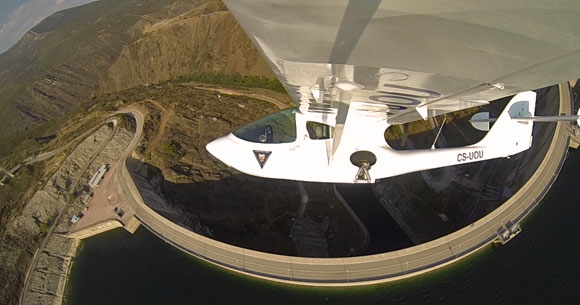
Technologies & technical features
- 2 Seater amphibious plane
- No private, commercial or military aviation qualifications required.
- Extremely easy to learn to fly in less than 20 hours
- Extreme low radar detection technology
- Simple manufacturing systems & technologies for technological transfer agreements
- Maintenance programme simple and extremely economic
- Fuel used normal gasoline 95 octane
- Fuel consumption for 10 to 15 litres per flying hour
- Autonomy upto 1,500 km per flight
- Max speed upto 260kmph
- Stall speed min: 70 kmph
- Flying height of upto 3,000 metres
- Automatic flight pilot
- Wide and comfortable two seater cabin
- Take off sea / river / land runway max 300 metres (normally 150metres)
- Bullet proof level iii undercarriage and under wings protection
- Technokontrol anti-explosion fuel tanks
- Technokontrol anti-slosh fuel tanks
- Technokontrol safety fuel valves
- Aeroplane emergency parachute system.
- Engines power from 100 to 200hp.
- Surveillance video & recording systems.
- Cabin or helmet night vision surveillance
- Cabin or helmet thermal heating surveillance technologies.
- Protective rectractable undercarriage

Certified manufacturing quality and safety standards by the European Aviation Safety Agency (EASA)
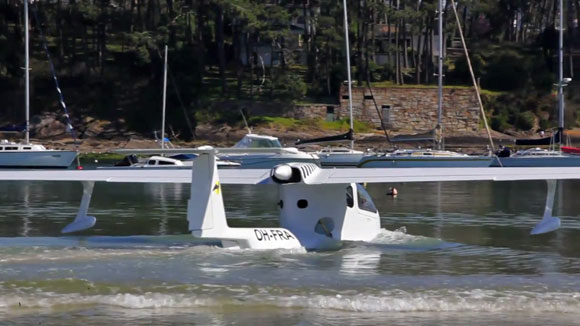
Easy landing & take-off
Take off sea/river/land runway max 300 metres (normally 150 metres).

Bullet-proof Level III Udercarriage, Underwings and Cockpit
Easy to fly
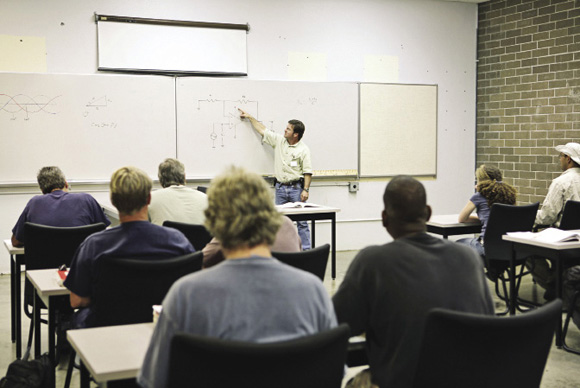
The Eagle Eye I Private & Sport model is easy to learn to fly in less than 20 hours.
No private, commercial or military aviation qualifications required.
All pilots will be trained in our european installations to become qualified instructors.
Low radar detection
Extreme low radar detection. Due to the hidroplanes manufacturing materials and the possibility to fly continously for many hours at minimum ceiling height.
Most european military and civilian radars cannot detect the Eagle Eye I & Eagle Eye IV in flight.
Engines
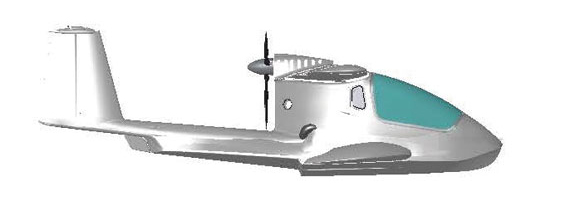
Eagle Eye I engine powered from 100 to 200 BHP.
Possibility to adapt to all international engine suppliers and spares.
Technokontrol safety technologies
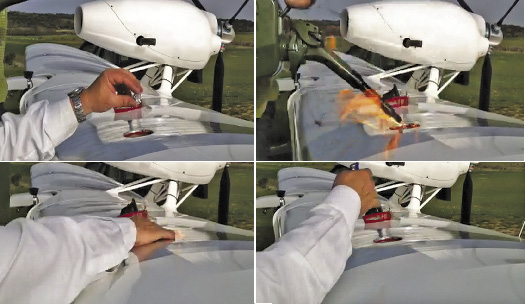
Anti-explosive fuel tank
Anti-Slosh fuel tank
Safety fuel valves
Airplane emergency parachute system
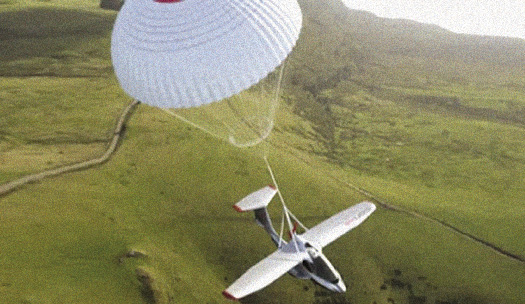
Hi-technology features with easy to use navigation systems, GPS, etc
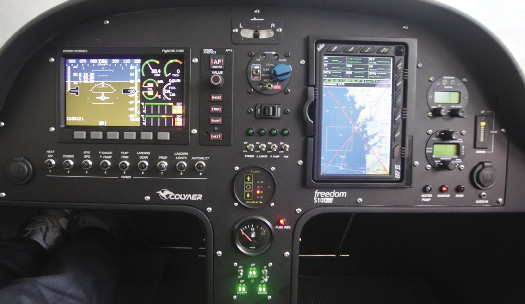
Easy Refueling / Parking
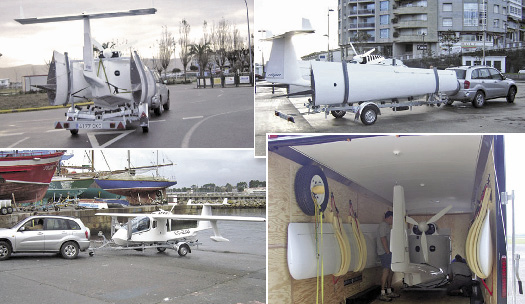
Port/Dock/Land/River easy refuelling-parking
Wide and comfortable cabins
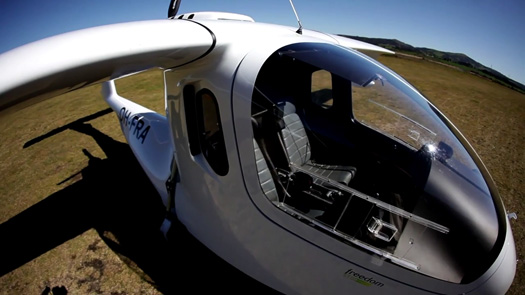
The Eagle Eye I Private & Sport versions have wide & comfortable cabins from 2 seater to 5 seater in the Eagle Eye VII & VIII (luxury versions).
Quick and easy Transport / Storage
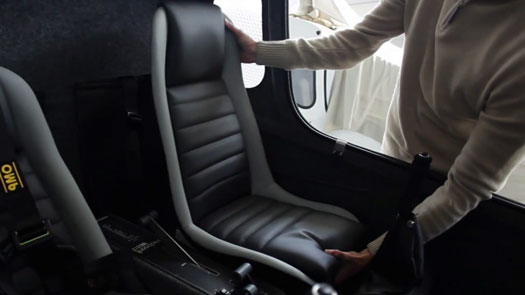
Automatic pilot
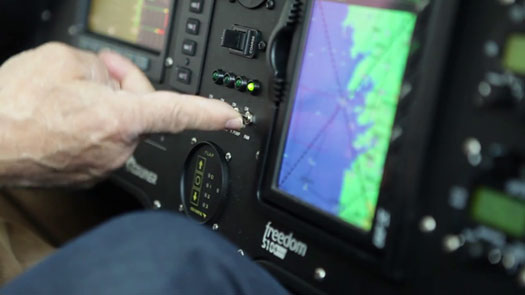
Automatic pilot flight system. Due to long surveillance flights this allows the pilots to have a less stressful flight.
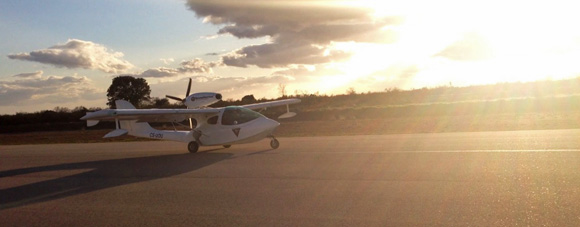
Technical specifications for the Eagle Eye I
- Wingspan The Eagle Eye I: 10-12,4m depending on final use.
- Length:5,50-6,25 depending on final use
- Wing surface The Eagle Eye I.10-14metres depemding on final use.
- Empty weight:325-450kg depending on final use
- Take off weight:550-750kg dependinh on final use.
- Load factor +5G/-3G Performances
- Stall: 70kph
- Cruise speed Eagle Eye I:190-200Kmph
- VNE Eagle Eye I: 200-260Kmph
- Climb rate Eagle Eye I:5-6m/s
- Max. L/D Eagle Eye I:20:01
- Min. sink rate Eagle Eye I:1,5m/s
- Take off/landing run Eagle Eye I:150m-300metres
- Range 900-1500km
The Eagle Eye I is our new amphibious aeroplane from Technokontrol to be used as an efficient aerial observation and safety control platform. It has a two seats side by side assembly with a large cockpit ( 1.10 m width ) and with exceptional visibility. The canopy includes an elastic gasket that makes the cockpit protected from rain and waves. There is a large place for baggage in the back of the seats. The engine is integrated into the fuselage and permits 80 bhp to 120 bhp. However, depending on its final use or needs to can be increased up to 150 bhp.
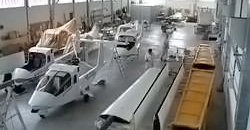
The Eagle Eye I has been carefully designed to take off and land in extreme short distances which normally are from as little as 150 metres to the 300 metres. The generous V-shaped hull allows the using of the aircraft with waves up to 30 cm high, as well the high location of the wings avoids the crashing of the waves on it`s during the takeoff and the landing. The T-shaped Tail is also far enough from the ground to avoid the contact with waves. The side floats were designed for the lowest aerodynamic resistance and the highest features of floatability. The design and size of the wing makes the hidroplane have a great glide co-efficiency of 20:1 allowing thermal flights possible with the engine switched off. The flaps operate from – 5º on cruising flights to + 50º for short landings.
The Eagle Eye I is totally manufactured with composite materials ( FV, Cb, Aramida, Epoxi, …) which are completely corrosion free. Mechanical parts and screws are made of stainless steel A4 ( AISI 316 ) and anodized aluminium. This guarantees low cost of maintenance. The range is of 900km to 1.500 km. and uses the normal and easy to find 95 octane gasoline.
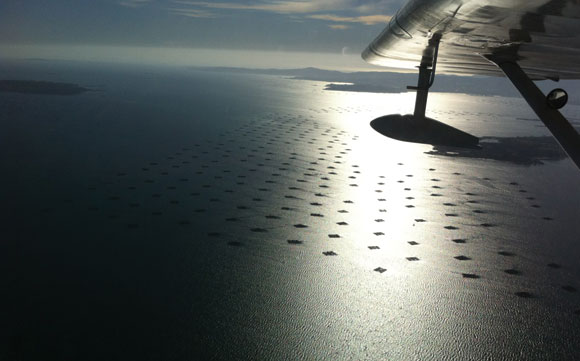
Depending on the clients needs we can "custom make and design" each model for their exact requirements thus being each amphibious plane of different final designs depending if it will be used for "Search & Rescue" services which will have launchable "safety pods" which can be dropped onto to sinking/damaged ships/platforms for example, to the most modern and sophisticated night vision, thermal seeking cameras for policing or anti-terrorism activities which will have recroding and viewing electronics inside the cockpit and external viewing pods on the exterior fuselage.
Technokontrol has also made the Eagle Eye I as easy to use as possible reducing training to less than 30 hours, 10 hours for land operations/10 hours for sea operations/10 hours for river operations. Depending on the final use and the sophistication of the technology incorporated into each model of plane these training courses will be longer and more designed towards the complete use and knowledge of these technological systems.

The use of commercial petrol engines allows the final operator to have access to easy and efficient repairs and maintenance programs and these engines run on normal gasoline which make the cost and rate of return of the initial investment extremely beneficial and cost effective.
Land transport of the planes are done in protected sea freight containers and can be delivered anywhere in the world. Re-assembly and flight preparation of an Eagle Eye I can be done in less than 2 hours from container to flight.
All of our Eagle Eye I have as unique safety & security benefits and features as anti-explosion fuel tanks, bullet proof undercarriages, anti-slosh fuel tanks, emergency plane parachute system, even options as night vision and thermal heat cameras just as a small example of what we can custom manufacture for each of our clients needs at a fraction of normal private aircraft or private jets and even less with amphibious usage.
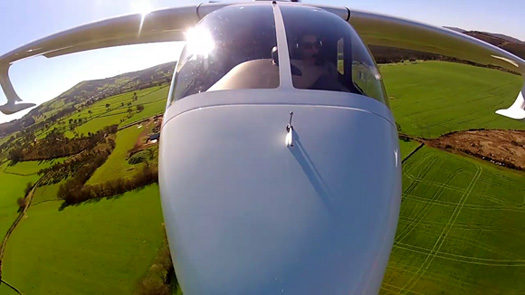
General characteristics of the Eagle Eye I
- Side-by-side 2-seater Amphibian/hidroplane aircraft with double-stick control system.
- The T-shape tail and high wing ensure that the control surfaces are far enough from the water to avoid interference from splashing.
- Spacious cabin with great visibility makes this aircraft ideal for coast-guarding activity, aerial photography, search & rescue, policing etc.
- The programmable Flap Control (5 points) means the ability to operate with angles from -5º (cruise) to +50º (airbrake).
- SAFETY: High glide rate (20:1) and low stall speed (70 Km/h).
- INDEPENDANCE: The real independence of deciding your own future and technological programs.
- CONFIDENCE: The Eagle Eye I you will be able to experience the real pleasures of flying as you will feel confident operating over both water and land.
- CONVENIENCE: The aircraft can be assembled and disassembled in 45-120 minutes by 2 people and transported on a trailer thus making it possible to use it anywhere.
Construction materials
- The Eagle Eye I is built entirely from composite materials (carbon, kevlar, glass...) except for a few metallic components made in stainless steel AISI 316 and aluminium 6082 T6. These materials offer long-life, low maintenance and safety even when operating in salt water.
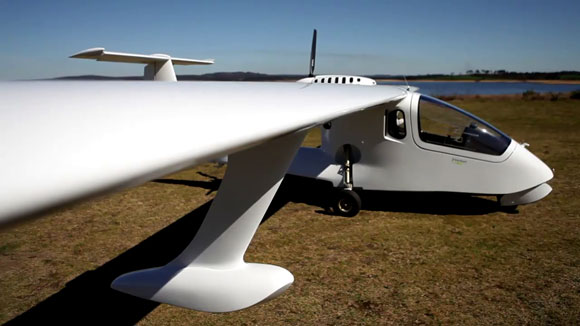
Fuselage
- Made from Carbon and Kevlar, with a reinforced hull, the fuselage absorbs the impact of landing on water and offers greater safety. Carbon and Kevlar provide resistance and rigidity, indispensable for operating in water, and also guarantee a long life for the aircraft.
- The hull of the Eagle Eye I is divided into 3 independent compartments, with access registers, which guarantee the buoyancy of the aircraft in case of any perforation caused during impact on the water.
- Bullet proof undercarriage.
- Anti explosion fuel tanks.
- Anti slosh fuel tanks.
- Emergency aeroplane parachute system
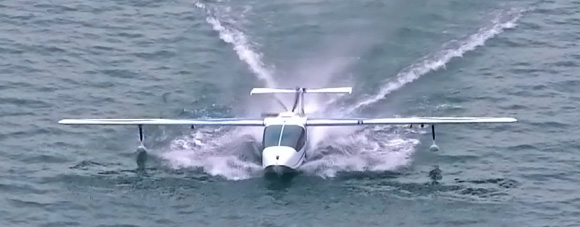
Water ruder
- Operates in synchronization with the regular steering without having to be retracted as its position does not interfere with landing and take-off procedures nor decrease the aerodynamics. Its size and position give the Freedom maximum maneuverability in the water.
Floats
- Made from Carbon and Kevlar which means they are very resistant to impact.
- Aerodynamic design which minimizes both resistance in the air and in water while securing maximum sailing and buoyancy.
- The distance between the floats and the water during take-off and landing is 45cm - there is no contact with the water ensuring maximum safety during these maneuvers
Engine specifications
- The engine is integrated into the fuselage, improving the aesthetics of the aircraft and optimizing aerodynamic performance and stability.
- Normal engine (80 bhp)
- Special engine (100-120 bhp)
- Extreme power engines (150 bhp)
- The reversible propeller facilitates maneuvers in and out of docking area.
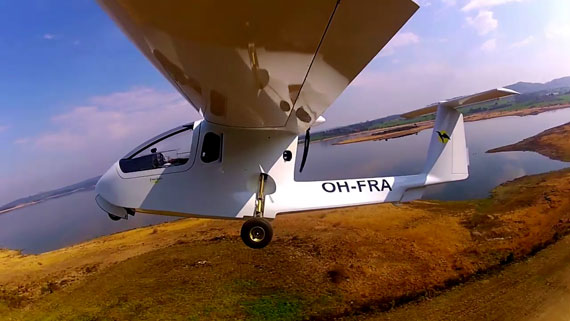
Landing gear
- An electric system operated by stainless steel actuators, which is completely separate and independent for each wheel. The mechanism has detectors that indicate the opening and closing position of the wheels on the control panel - guaranteeing complete safety during landing. Additionally the main landing gear has a locking system which guarantees that the wheels are closed during landing and take-off on water.
- When not in use, the landing gear folds into the fuselage where it can be stored without interfering with the aerodynamics of the aircraft.
- The design of the nose wheel allows it to be controlled by the steering pedals, which remain unlocked when the landing gear is closed and operate when the landing gear is open to steer on land.
- Hydraulic breaking system which operates simultaneously in both wheels of the landing gear. Made from high quality stainless steel AISI 316 and anodic aluminium 6082 T6, which ensure strong resistance against salt corrosion.
- The landing gear storage compartment is equipped with a series of tubes which allow any water collected during take-off to be dispersed quickly.
Take-off and landing
- The Eagle Eye I requires 150 metres to 300 metres depending on land/water conditions
- Take-off on water is stable from the first moments due to the generous control surfaces. The V-shaped hull allows the aircraft to operate in open waters lessening the impact on the hull.
Range
- The Eagle Eye I has three fuel tanks in the fuselage with a capacity of 75 litres, giving it a total range of 900km- 1.500 Km.(Depending on conditions and extra fuel pods con be attached)
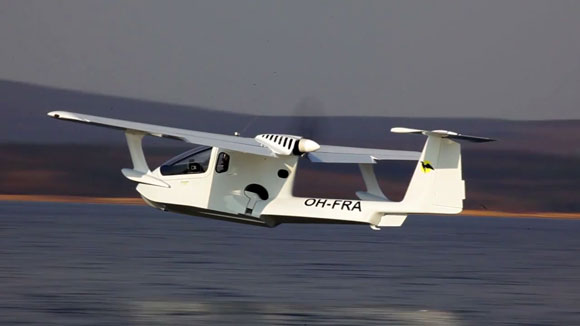
Military Aviation
- Eagle I & II Law Enforcement
- Eagle Eye III & IV Military
- Eagle Eye VIP/Military
- Eagle Eye refueling on fire
- Eagle Eye undercarriage stress testing - Landing without wheels
- Aircraft Fire Fuel Tank Test - Prueba de ignición en tanque de combustible de un aeroplano
- Heat Conductivity of TK Alloys - Conductividad térmica de malla TK
- Types of TK Alloy Formats - Formatos de presentación de malla TK
Technokontrol Certificates & Associations
Technokontrol Manufactures, Designs & Researches our safety products in the European Union at the highest possible International Accident,Health & Safety standards.
TechnoKontrol is a member of the NFPA
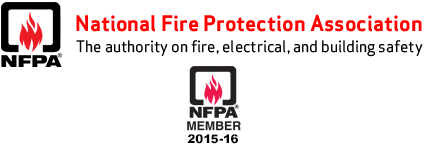
TechnoKontrol Products are ATEX Compliant
(European Antiexplosive Safety Directives)

Technokontrol's Products & Services are insured by

Certificates



































TechnoKontrol Aviation Videos
- Eagle Eye II Amphibious Low Level Ground Flight & Water Base Landings
- Jet Engines Video
- TK Eagle Eye III & IV
- TK Aviation Civil Use
- TK Aviation Law Enforcement
- Refueling on fire
- Liquids balance
- Technical video
- Aircraft Fire Fuel Tank Test - Prueba de ignición en tanque de combustible de un aeroplano
- TK Outdoor Tests Presentation - Fire Services / KNPC Kuwait
- Security Test (SPA) - Prueba de Seguridad
- Heat Conductivity of TK Alloys - Conductividad térmica de malla TK
- Types of TK Alloy Formats - Formatos de presentación de malla TK
Aviation & Airports Protection
Products
What is B.L.E.V.E. explosion?
TechnoKontrol Wikipedia

TechnoKontrol: 1st in Spain for own Technology patents 2013 & 2014

- Ministerio de Industria Turismo y Comercio-OEPM
Technokontrol, the number 1 corporation in Spain filing for its own technology patents, trademarks and utility patents (SPA) - OEPM 2013 The year in numbers (SPA)
TechnoKontrol has been fully verified and certified by Bureau Veritas

Certificates
- ISO 9001 - ES108784-1
- ISO 14001 - ES108782-1
- ISO 45001 - ES108783-1
- ISO 4126
- ISO 28000
- ISO 37000
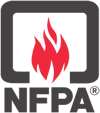
NFPA-National Fire Protection Association
NFPA-Asociación Nacional de Protección contra el fuego
TechnoKontrol is a member of the NFPA
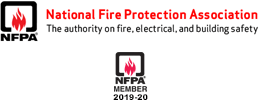
NFPA 69: Standard on Explosion Prevention Systems, 2016 Edition
Prevent deflagration explosions due to combustible dust particles, gases or vapors with NFPA 69. Combustible dust, gases and vapors produced in industrial settings can pose a significant safety hazard.NFPA 69: Standard on Explosion Prevention Systems offers definitive guidance on explosion protection and prevention systems.
ATEX - European Antiexplosive Safety Directives

- ATEX Guide: Protection in explosive atmospheres
- ATEX-EU/HAZLOZ-USA/NFPA-USA/DSEAR-UK/Explosion Directives TechnoKontrol Additional Anti-Explosion Data
- ATEX Directive in EU Directives
Dangerous Substances and Explosive Atmospheres Regulations - United Kingdom/ATEX

United Nations Economic Commission for Europe - UNECE - TechnoKontrol

- TechnoKontrol information for the UNECE BLEVE working group
Proposal transmitted by the governments of Spain and France
The European Parliament and The Council

Technokontrol's Products & Services are insured by

Dossiers TK Group of Companies
TK-Global Engineering - Where efficiency and reliability become a reality



BP World Report
Static Electricity Dangers and Protection
- Static Electric Discharge Hazard On Bulk Oil Tank Vessels
- Static Electricity - ISGINTT
- Dangers of static electricity and protection in aviation
- Static Electricity - IAPA
- U.S. Chemical Safety and Hazard Investigation Board
US Department of Transport
USA Chemical Safety Board
An independent federal agency investigating chemical accidents to protect workers, the public, and the environment.
About the CSB
CSB Safety Videos
- Chevron Richmond Refinery Explosion
- Deadly Contact
- West, Texas Real Live Blast Damage Video
- Hot Work - Dupont Explosion
- Static Sparks Explosion in Kansas
- Danger of Flammable Gas Accumulation
Articles
- Energy Sector Vulnerabilities: Petroleum (Spanish)
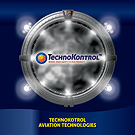
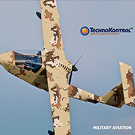
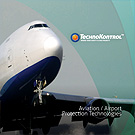
 Safety Products System
Safety Products System Eco-Energy Power Plants
Eco-Energy Power Plants TK Aviation
TK Aviation Environmental Industries
Environmental Industries Mining
Mining Petroleum Industry
Petroleum Industry Industrial Projects
Industrial Projects Maritime Industry
Maritime Industry Military Vehicles
Military Vehicles Transportation & Auto
Transportation & Auto Construction Industry
Construction Industry Global Food Industry
Global Food Industry Electronic Safety Systems
Electronic Safety Systems Housing Projects
Housing Projects